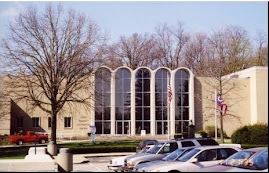Click here to see the video about Ida's gowns that will be part of the new McKinley Gallery kiosk!
Monday, July 15, 2013
Ida McKinley Dress Mugshots
I'm working on a new grant proposal and I've been trying to decide which dress to target next. I wanted an easy reference sheet to keep track of the dresses visually, so I created these "mugshot" sheets to help!
These are all 20 of the dresses we have targeted to be part of this project. As you can see, we've got three of them funded!
Just 17 to go...
If you'd like to make a donation, please send a check to:
Every dollar we raise for this project goes directly to the conservation of one of Ida's gowns. Your donation is also 100% tax deductible!
These are all 20 of the dresses we have targeted to be part of this project. As you can see, we've got three of them funded!
Just 17 to go...
If you'd like to make a donation, please send a check to:
Ida McKinley Dress Project
McKinley Presidential Library & Museum
800 McKinley Monument Dr NW
Canton OH 44708
Every dollar we raise for this project goes directly to the conservation of one of Ida's gowns. Your donation is also 100% tax deductible!
Friday, July 12, 2013
Ida Dress Project UPDATE - Dress #1
Here are some details about the work textile conservator Chandra Obie has done so far on Dress #1 in the Ida McKinley Dress Project.
 |
| 1965.135.2 |
The first dress is an elaborate
two-piece beige silk damask dress with a pattern of leaves and small flowers.
The bodice is heavily ornamented with pearls, glass beads, and tiny square
mirrors. The dressmaker's waist tape reads: "Mrs. Dunstan, 6 East 30th
St., New York." This dress is absolutely lovely!
The following quotes are from Chandra, discussing the work she's done on the dress so far:
 |
| Detail #1 |
The inside edge of the chiffon panel was torn away and a small section
appeared to be lost so what remained could not reach all the way to the seam
line. I completed the lost part and supported the damaged, weak edge by
adhering it to a patch of silk crepeline impregnated with conservation
adhesive. I tacked the edge back in place to match that tacks that
remained (originally, this panel was probably sewn in the seam somehow but that
evidence was probably lost when the lining was restored).
 |
| Detail #2 |
The treatment for the skirt hem is not finished yet, but it is also
getting adhesive patch support. This area is a case of "one step
back to make two steps forward." To get access to the reverse of the
damaged fabric, I had to take apart part of the hem where the restoration
lining was sewn to the skirt. Luckily, those aren't original stitches
anyway. With the restoration lining released, access in this area is very
good so I can use larger support patches that extend the area of support and
move the edge of the patch (which can create an area of stress) well away from
weak areas. Those patches are also silk crepeline impregnated with
adhesive. I apply it to the reverse with just light tacks (the adhesive
starts to stick with just the heat of your fingers), turn back to the face
where I can align lose threads and be sure slits are closed, then activate the
adhesive with a heated spatula. The finish will be nearly invisible with
the slits and tears (like the patch tear open in this picture) held in place
from the reverse.
 |
| Detail #3 |
I treated a small tear on the proper right shoulder just outside of
the beading. A small adhesive patch was slipped through the tear, aligned
with tweezers, and activated with the heated spatula. This area undergoes
a lot of movement so I also stitched the slit closed with Skala thread using a
laid-thread-couching technique. I'm not satisfied with the finish on the
areas I stitched so I may pick them out and try again with a finer thread.
 |
| Detail #4 |
The beaded sections have a metal coil detail. It looks like a
thin, flat ribbon of metal and has no core. It is probably brass: the
copper has reacted with acid and produced salt byproducts (which appear
as that green, crusty stuff). The corrosion is quite extensive in some
areas and the metal coil is very thin, so the corroded areas can't be safely
cleaned. I used tweezers, a soft brush, and vacuum suction to reduce the
thickest buildup and remove it before the salts could work their way deeper
into the embellishment.
Subscribe to:
Posts (Atom)








